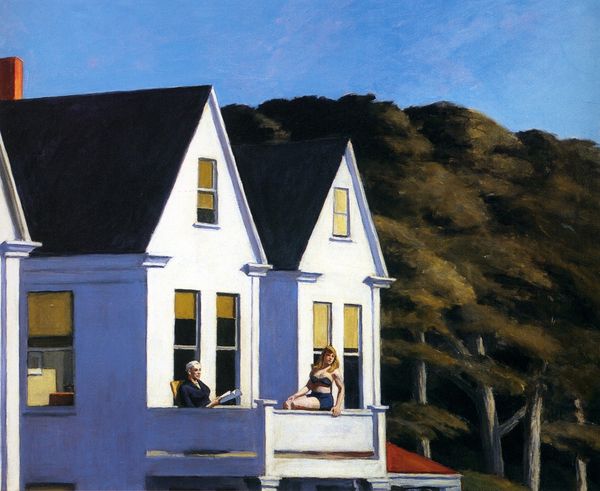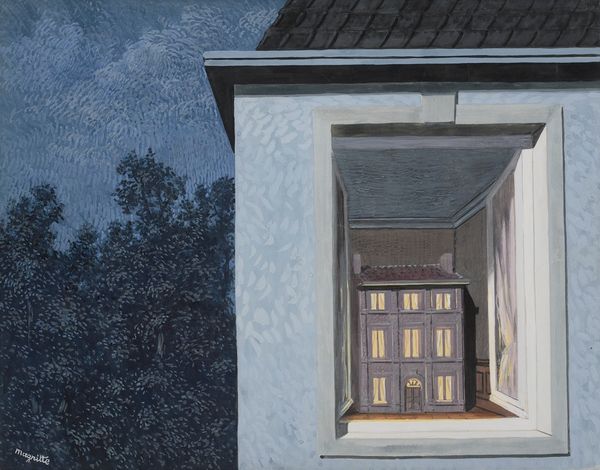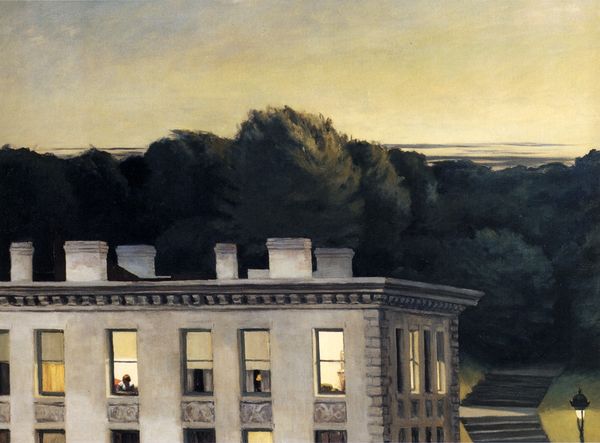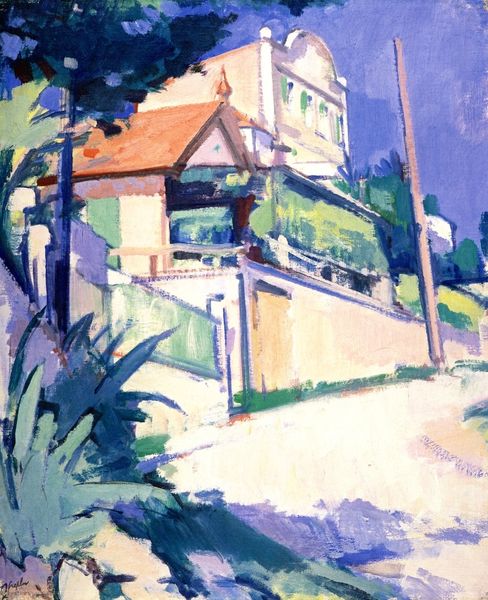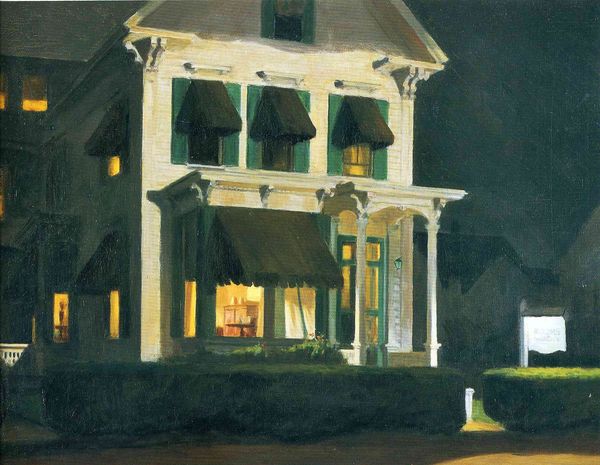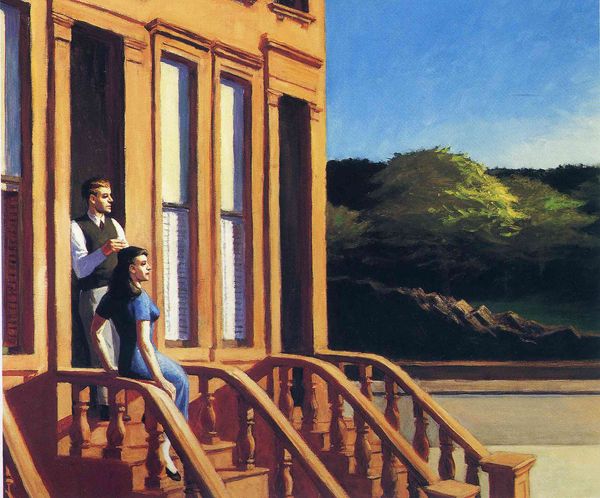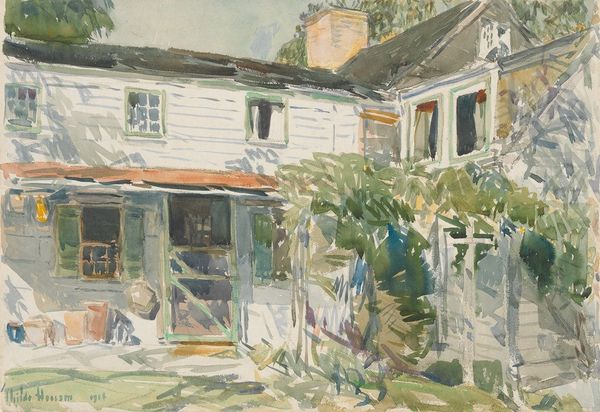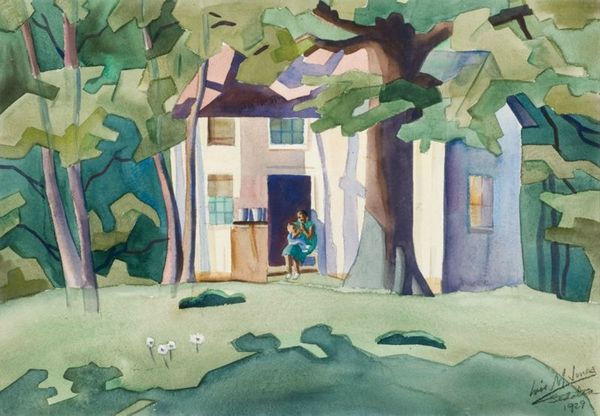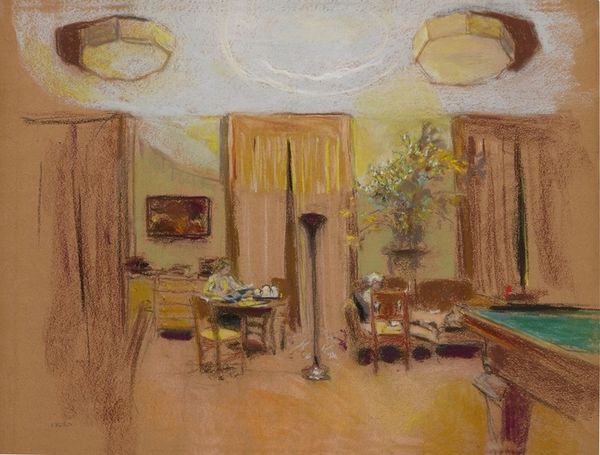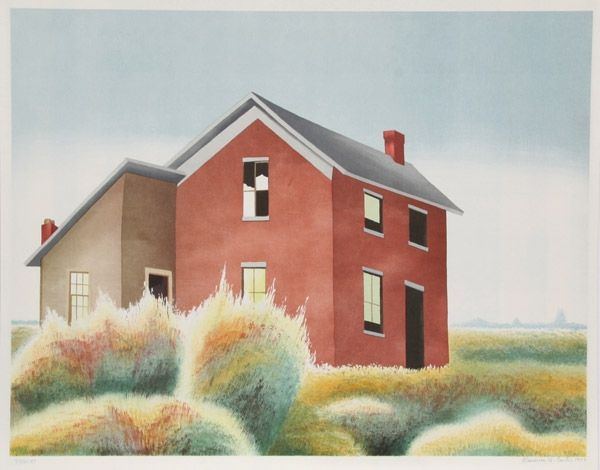
painting, oil-paint, architecture
#
photorealism
#
painting
#
oil-paint
#
landscape
#
house
#
oil painting
#
ashcan-school
#
cityscape
#
architecture
#
realism
#
building
Dimensions: 101.6 x 76.2 cm
Copyright: Edward Hopper,Fair Use
Editor: Here we have Edward Hopper’s "Seven A.M.," painted in 1948, currently residing at the Whitney. It’s an oil painting that depicts the façade of a building, seemingly a small business, next to a dark, almost imposing forest. I’m immediately struck by the stark contrast between the mundane architecture and the rather ominous nature pressing in. What draws your attention in this piece? Curator: What immediately strikes me is how Hopper uses architecture to comment on the American landscape and the isolation of modern life, something the Ashcan school did. Consider the historical context: post-war America saw a surge in suburban development, small businesses struggling against big corporations, and the feeling of anonymity that came with rapid urbanization. Hopper captures this tension perfectly. Notice how the building's harsh geometry is juxtaposed with the organic, almost unruly forest. Do you see that tension? Editor: I do. It’s like two worlds colliding – one man-made and the other natural, but they don't quite mesh. And the lighting emphasizes that contrast. The building seems artificially bright. It's like a stage set. Curator: Exactly. This deliberate contrast highlights the artificiality Hopper associated with the public role. The “stage set,” as you call it, serves to question our perception of what is public versus private and its affectations. Think about the objects displayed in the shop window, deliberately arranged for public consumption and its commerce. It also makes one question to what extent such displays reflect any true commerce or honest transaction between one another. Editor: So, it's less about the literal scene and more about Hopper critiquing the cultural and societal shifts happening around him? It seems very different than straightforward Realism. Curator: Precisely. Hopper employed realism as a tool to unpack those cultural shifts. He questions the values promoted and imposed by a society prioritizing superficial representation over authentic human connection, a kind of counterpoint. So, looking at “Seven A.M.,” how has your interpretation evolved? Editor: I now see beyond just the surface depiction to understand Hopper's commentary on the anxieties of post-war America. It is pretty powerful stuff! Thank you! Curator: My pleasure! I also appreciate your take on this too, emphasizing that push-pull dynamic.
Comments
No comments
Be the first to comment and join the conversation on the ultimate creative platform.

